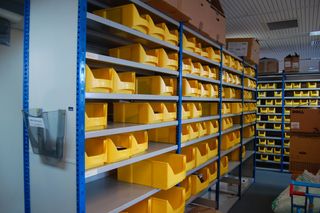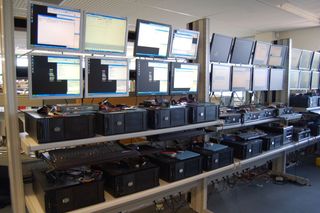Miracle Workers: rescuing data from the jaws of disaster
Even if you've dropped your laptop or your server has been set on fire, all hope is not lost. Data recovery companies such as Kroll Ontrack could still rescue your valuable files. Jim Martin dons a white lab coat and goes behind the scenes at a data recovery lab.
There are various options depending on the nature of the problem. For example, it might be possible to recover the data instantly via the internet in as little as an hour if it's a simple case of accidental file deletion or corruption and all your hardware is intact and working fine. However, if the hardware is faulty - either a failed disk or other component, such as a RAID controller - you'll almost certainly have to send the equipment to Ontrack's lab. For the most complex or sensitive situations, engineers can visit your premises to repair the problem and recover the data on-site.
There are also various service levels, which determine how quickly your data is recovered and returned to you. For mission-critical business data, Ontrack's engineers will work around the clock, but where budget is more of a concern, rather than time, there are cheaper options.
Recovery position
When your hard disk(s) arrive at Ontrack's lab, they're bagged and tagged to allow them to be tracked through the entire recovery process. They then head to the pre-diagnosis area and are checked to find out if they're physically working. If there are any unusual rattles or the bearings are seized, they head into the clean room. However, for those that will power up and spin, they are connected to one of the imaging PCs.

Bagging and tagging incoming hard disks so they can be tracked throughout the data recovery process

Kroll Ontrack's imaging computers
The disk's contents are then copied with Ontrack's proprietary software. The software can automatically skip over bad areas - portions of the disk that may be damaged or corrupted. It then scans in reverse', backing up as far as it can until it reaches the end of the bad area in order to recover as much of the data as possible. Once the disk has been imaged, the data is stored on Ontrack's severs, which are currently fitted with 140TB of storage. The disk itself is now finished with, but the image must be worked on by the experts in the logical recovery area. This is split into various sub-areas for different file systems including Windows, Mac, Unix, plus other areas for RAID and virtualised systems.
Get the ITPro. daily newsletter
Receive our latest news, industry updates, featured resources and more. Sign up today to receive our FREE report on AI cyber crime & security - newly updated for 2024.

Working on servers and RAID arrays
As well as disks, data can be recovered from tape backups usually for for migration to a different format. Accidental initialisation can also be overcome and backup data recovered.




